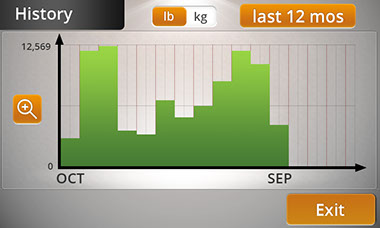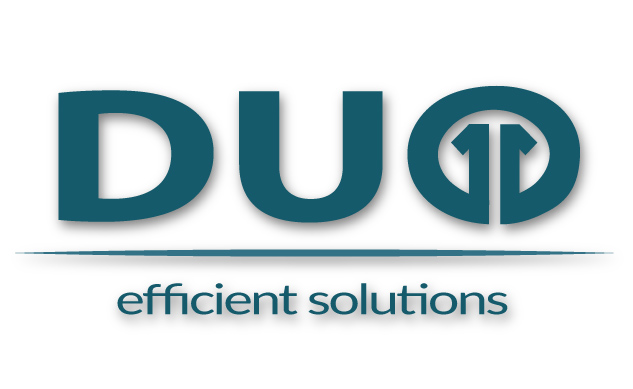POWER KNOT LFC
The LFC (Liquid Food Composter) is an aerobic bio-digester that disposes of your waste food safely and cost effectively. It is a fully enclosed automatic bio-digester that disposes of most food matter within 24 hours. Can be used to save money at a variety of facilities that have waste food.

Once it is installed, you can add waste food at any time and only decomposed food is discharged into the waste water. Water is injected into the LFC to maintain equilibrium for the microorganisms, to rapidly digest the organic material, and to flush decomposed material out of the machine. A rotating arm slowly churns the waste food to constantly mix the old food, new food, oxygen, and microorganisms to enhance the decomposing function.
How it works
The LFC uses a series of processes in which microorganisms break down biodegradable material in the presence of oxygen. The environment of the LFC, with our proprietary mixture of microbes and enzymes, accelerates the digestion of most food products and bio-plastics within 24 hours. The output is grey water that is environmentally safe. You can discharge this down the drain or use it to enrich your landscape.
The LFC is a practical alternative to the traditional disposal of waste food. Anything you can eat, including fruits, vegetables, meat, fish, cheese, bread, rice, and noodles can go into the LFC. The machine can digest both raw and cooked foods. The process is totally green because it uses no chemicals.
As one of earth’s oldest processes, composting is the most effective means of stabilizing and converting biodegradable waste. The waste food is not being chopped but it is decomposed to such a degree that it becomes a liquid and can exit the machine only through a fine mesh screen. The rich by-product is therefore safe and replenishes nature.
Saving the planet
When waste food is discarded in a landfill, it degrades as an anaerobic process (in the absence of oxygen). This decomposition produces methane (CH4) which is 72 times worse for the atmosphere in the short term than carbon dioxide (CO2). The effect of this on global warming is huge, because the largest part of garbage sent to landfills in the US is waste food. Further, the decomposition smells and can cause health problems. Discarding 100 kg (220 lb) of waste food per day causes the equivalent of 153 tonnes of CO2 per year to be sent to the atmosphere.
The decomposition inside the LFC is an aerobic process (in the presence of oxygen). This produces CO2 and water in a natural manner that is accelerated in the machine. This natural process is carbon neutral because the carbon was taken from the atmosphere to produce the food in the first place. The LFC uses minimal electricity that causes (for the LFC-100) the production of about 2.1 tonnes of CO2 per year.
Simple operation
The LFC is constantly digesting the waste and you can add waste food at any time. Simply open the door, throw it in, and close the door. In this way, you can view the LFC as a bottomless bucket. The motor on the LFC won’t run while the door is open for safety.
All configuration, indications, reports, and statistics are available through the touch screen. The operator doesn’t need to use the touch screen and for most applications the default settings work well. All configurable parameters are protected by password.
Weighing the amount of waste
Load cells on each corner of the LFC accurately weigh the amount of waste food in the LFC, the amount that is added, and the amount that is digested. This data is automatically stored and reported graphically and numerically. The data can be viewed by the hour, day, week, month, and year.
As the operator adds waste into the LFC, the touch screen indicates how much more can be added. When the door is closed the LFC indicates with a bright LED when more waste can be added with a simple green indication. As waste is added, the indication becomes yellow when no more waste should be added and red if the operator overloads the LFC.

Connection to the cloud
The LFC can connect through its Ethernet port to a cloud server maintained by Power Knot. The LFC securely sends data about the operation of the LFC to the server and that data is retained for five years. The data includes the amount of waste food digested hourly, daily, weekly, monthly, and yearly; the number of times the door is opened in these periods; and the amount of CO2 diverted from the landfill during these periods. If you have multiple machines, you can aggregate the data into a single report.
Remotely, you can view the health of the system including all diagnostics and when the LFC requires scheduled maintenance.
You have access to view and manipulate the data from any computer, tablet, or smartphone anywhere in the world. This access is available as long as you own the LFC at no charge to you.
For as long as the LFC is under warranty, Power Knot can monitor your LFC at no charge. We will send you an e-mail with weekly or monthly statistics and also alert you when it is time for periodic maintenance. We will also send an e-mail if there seems to be a problem and work with you to schedule service.

Benefits
- Convenience. Quickly digest waste food on site with no odor or noise.
- Cost Savings. Significantly reduce cost to dispose of and manage waste food.
- Compliance. Safely dispose of your waste without sending it to the landfill.
- Cleanliness. Eliminate smells, mess, and pests from your trash bins.
- Control. See statistics on usage, diagnostics, and service schedules with the LFC Cloud.
- Touch Sensitive. All configuration, indications, reports, and statistics are available through the touch screen.
- LFC Cloud. Connects to the cloud so statistics on usage, diagnostics, and service schedules can be monitored remotely.
Applications
The LFC Bio-Digester can be used to save money at a variety of facilities that have waste food including:
- Hotels and resorts
- Corporate and university cafeterias
- Restaurants and highway service centers
- Theme parks, convention centers, and stadia
- Hospitals and nursing homes
- Military canteens
- Bakeries and caterers
- Supermarkets and food distribution centers
- Cruise ships and oil tankers
- Remote camps for mining and humanitarian aid
- Island properties



